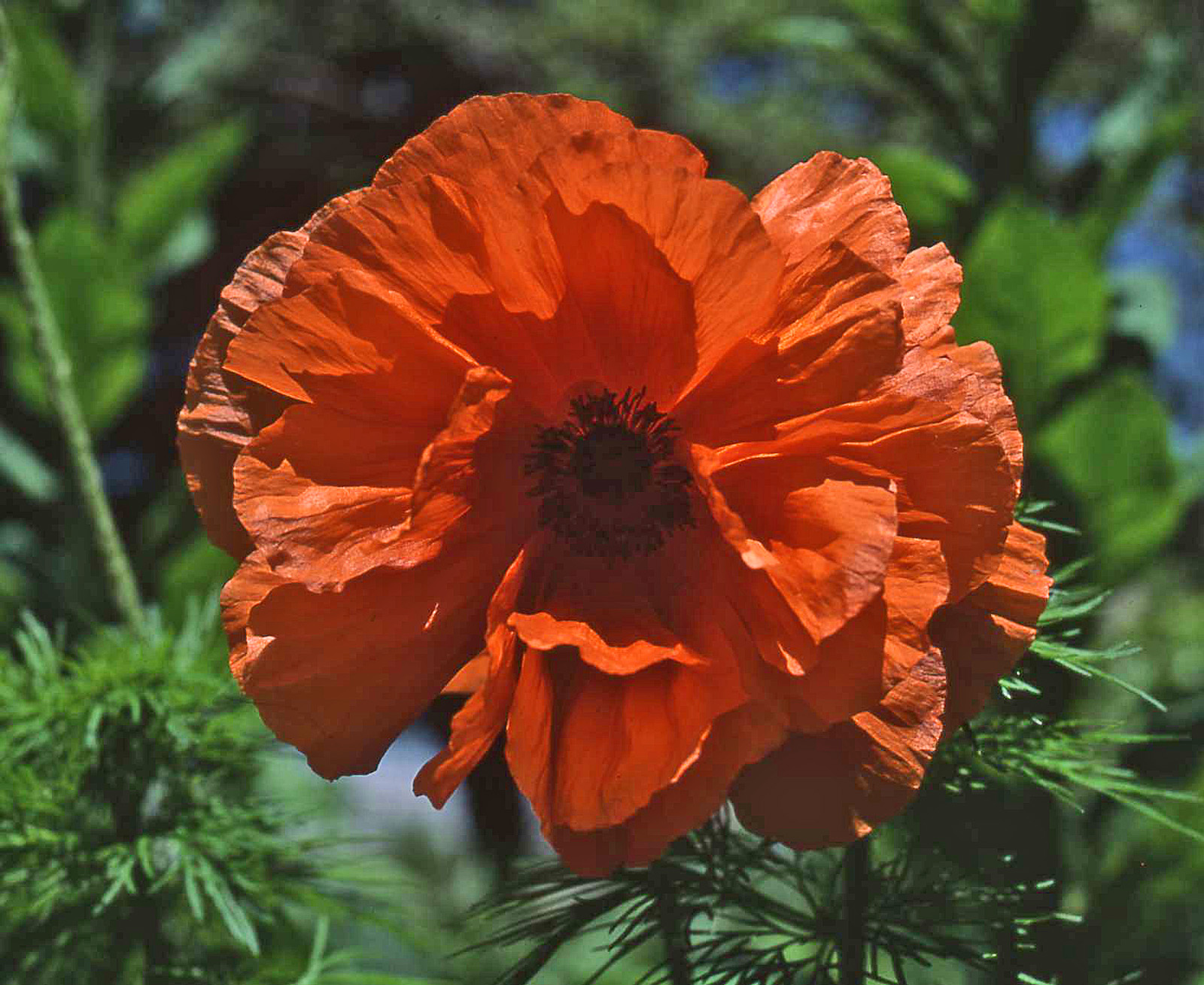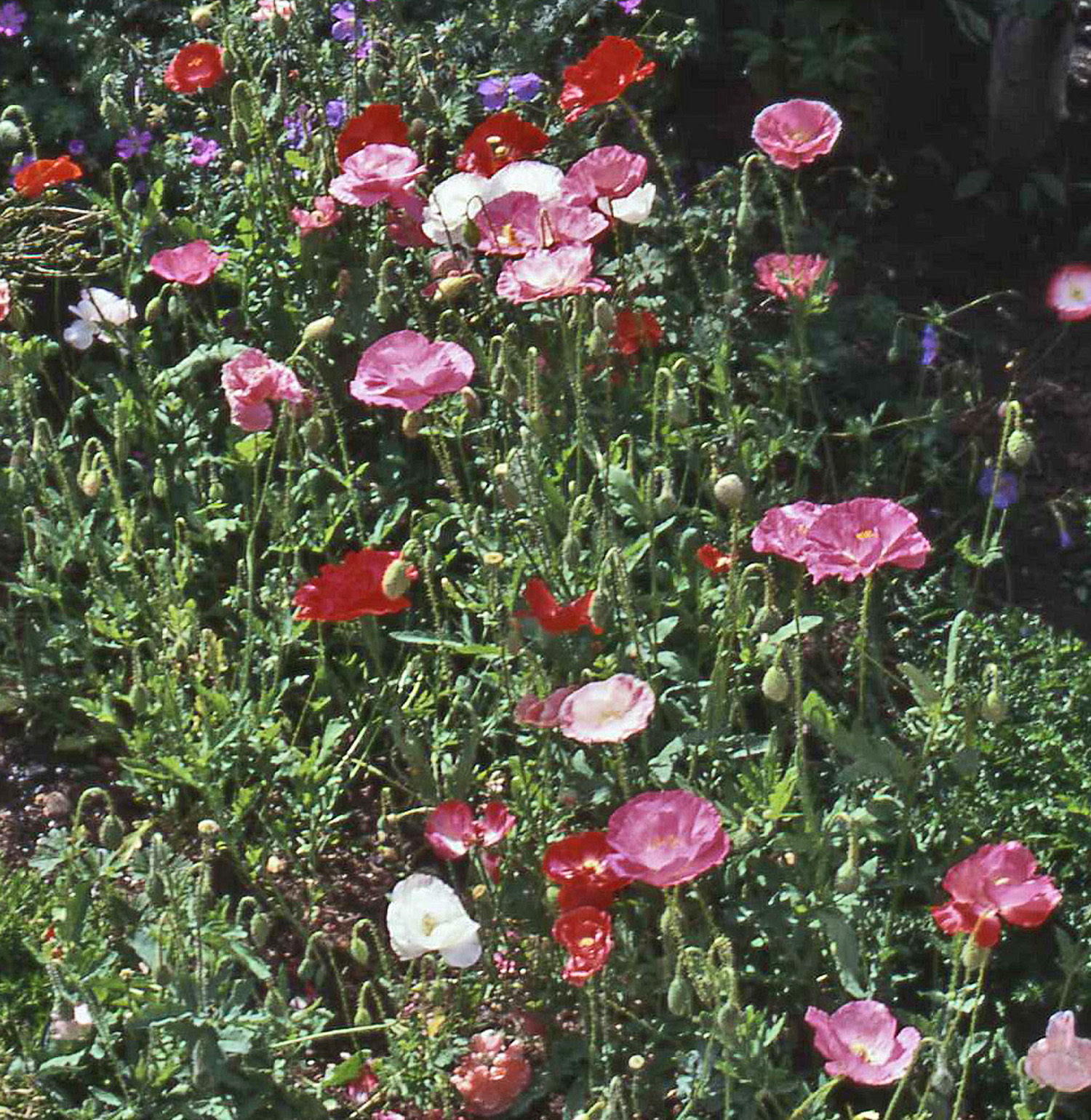by GardenLover | Mar 18, 2016 | Gardens to Drive
Eight Garden Trends Spotted on Navy Pier
By Teresa Woodard
At the Chicago Flower and Garden Show this week at Navy Pier, visitors are gaining a sneak peek at upcoming trends for the Midwest’s 2016 gardening season. Running March 12-20, the show began in 1847 as the Chicago Fruit and Flower Show and was one of the first consumer shows to be held at Navy Pier. Though its name has changed, the show continues to strive to educate, motivate and inspire its 40,000 visitors each year. Today, the show features 17 display gardens, seminars, cooking demonstrations, kids’ activities and a marketplace. Check out these trends we spotted.
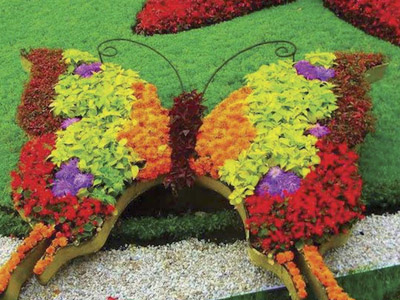
#1: Pollinators rule as illustrated with this over-sized floral butterfly in the Brookfield Zoo’s display garden. Growers are taking the National Pollinator Challenge to heart as they offer a host of pollinator-friendly plants. Just look for the bee icon when shopping this season at garden centers.
#2: Pantone 2016 Colors of the Year — Rose Quartz and Serenity — are popping up in many bloom colors including these Easy Wave Petunias in Pink Passion and Silver.
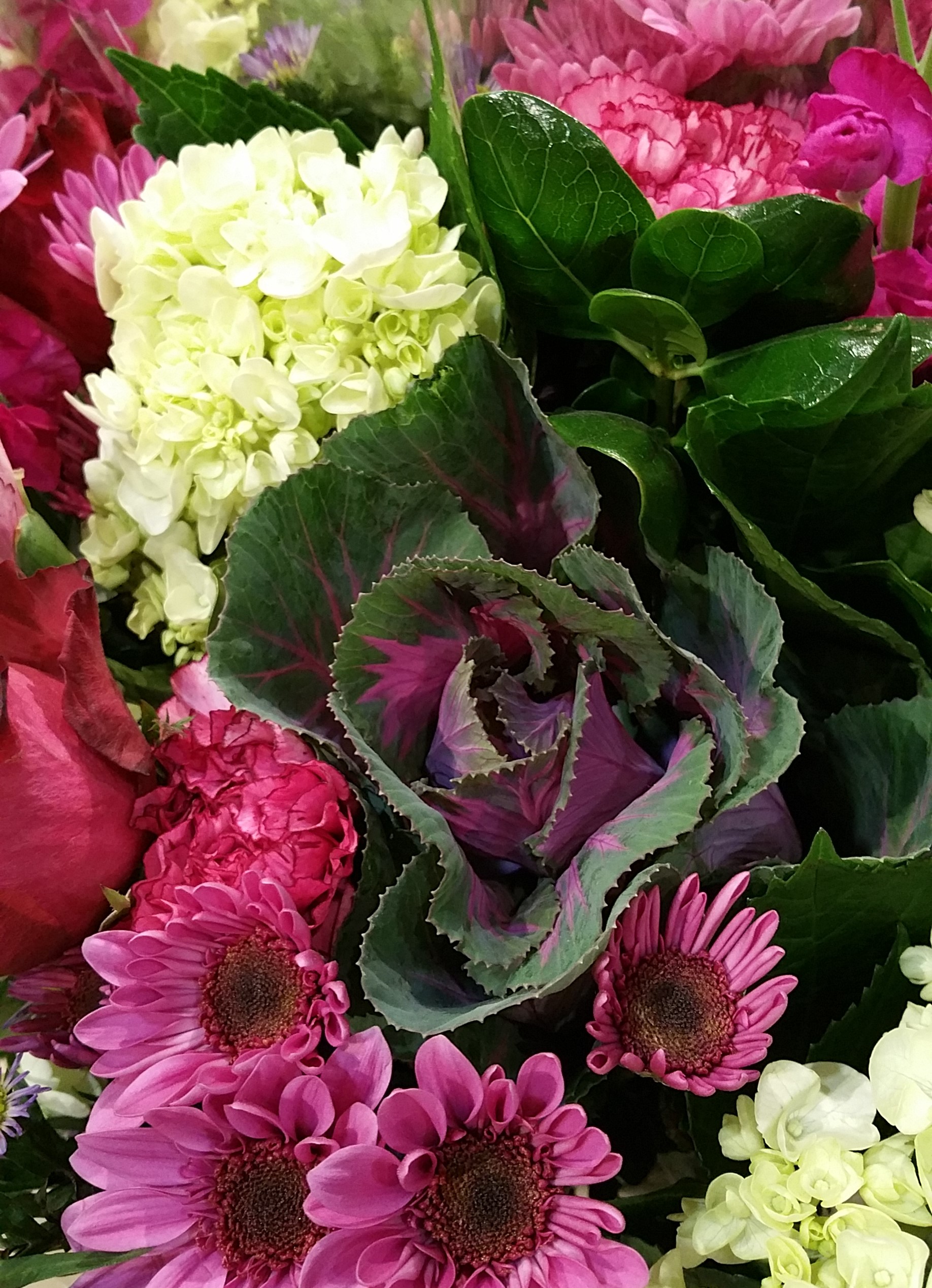
#3: Ornamental edibles (like this colorful kale) continue to jump the vegetable garden fence into perennial beds, container displays and even cut flower gardens.
#4: Tropicals remain strong, even in northern climates, for their colorful blooms and bold foliage. Medinillas (left) are making quite a stir with their large, long-lasting blooms.
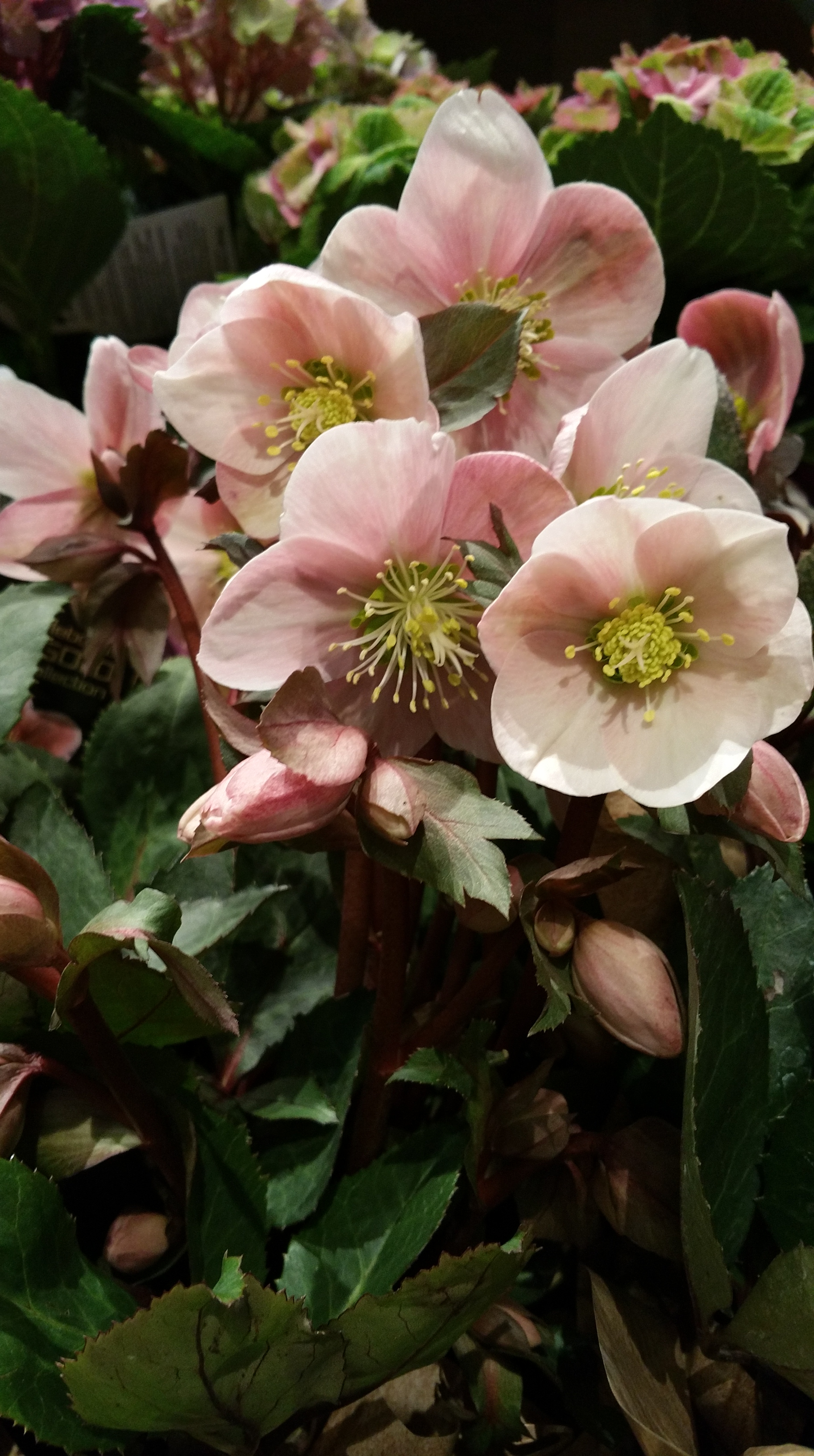
Helleborus Gold Collection ‘Pink Frost’
#5: New varieties of these ever-popular hellebores feature stronger stems and more upright blooms, adding to their appeal as a bridal bouquet flower. 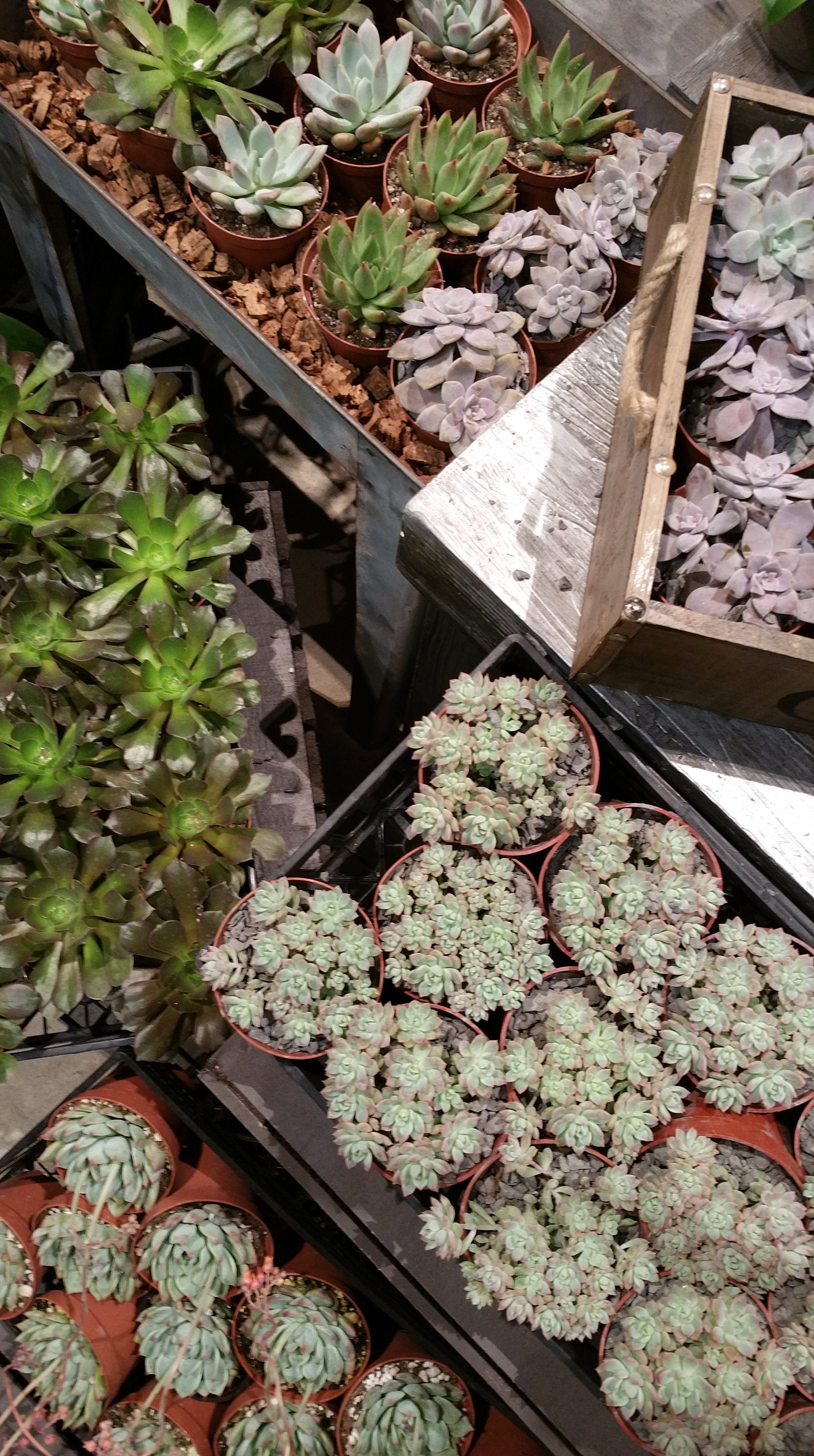
#6: Succulents remain strong in 2016. Look for them in green walls, green roofs, table centerpieces, dish gardens, bridal bouquets, groundcovers and more!
#7: Creativity abounds among today’s water features with a full spectrum of sizes from big spilling displays to smaller bubbling urn fountains. This impressive five-part display was designed by Aquascape who also sells these faux stacked slate fountain urns of resin).
#8: The Magnificent Mile’s impressive tulip displays have generated a lot of tulip fans in the Windy City. And today’s options are unlimited from two-tone singles (center) to peony-like doubles (left and right).
by GardenLover | Mar 12, 2016 | Gardens to Drive
Dreaming of a Mid-Summer Bounty of Home-grown Immature Ginger
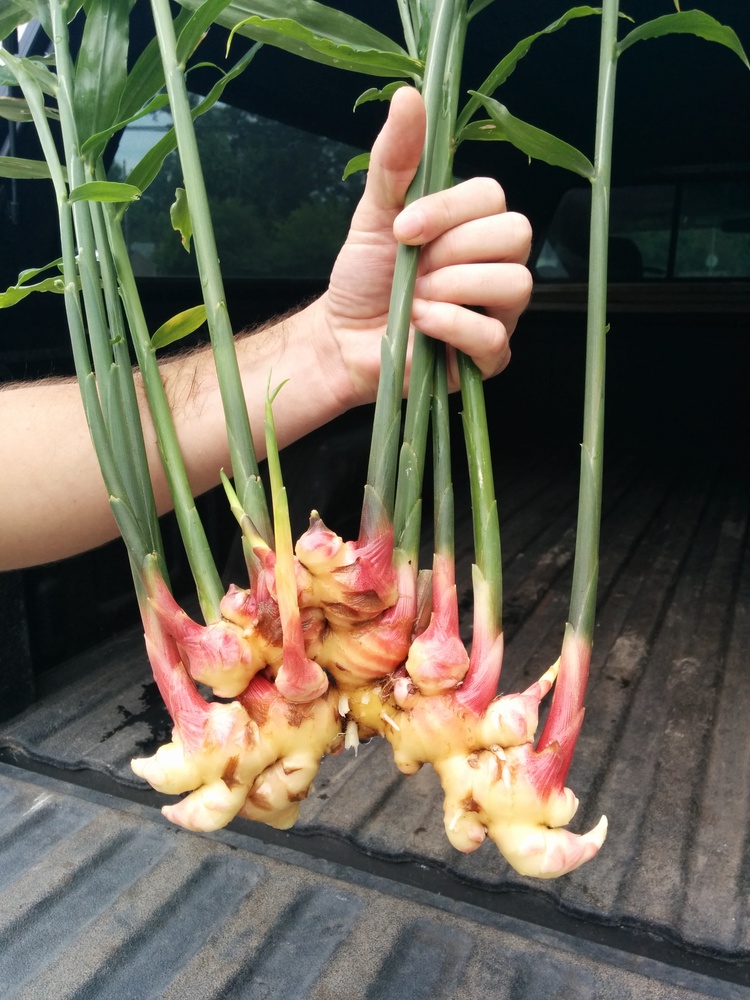
Young ginger photo courtesy of Joseph Swain
By Debra Knapke
Two years ago I purchased “baby” ginger at the Worthington Farmers Market (Worthington, Ohio) from
Swainway Urban Farm. The immature rhizomes were pearly white with rose accents. The characteristic papery covering and the interior fibers had not developed, and the flavor was sweet and subtle with the lightest of bites.
Along with the flavor comes a bounty of health benefits. I’ve used ginger for years as a digestive aid. Many use it to relieve nausea and queasiness due to motion sickness, pregnancy and chemotherapy. Ginger has been found to reduce inflammation which makes it an option for the relief of headaches and different forms of arthritis. And it has been found to inhibit rhinoviruses which cause the common cold. But, some find mature ginger to be too strong, and this is where immature ginger is valuable. Its gentler scent and taste are tolerated by more people.
Could I grow immature ginger? Off I went to the grocery store to purchase ginger rhizomes. I planted them, watched them grow, and then moved the pot into my greenhouse in the fall. What I achieved was growing bigger, mature rhizomes that were nothing like the baby ginger. I missed something here.
Enter the solution – Joseph Swain was offering a
workshop on growing immature ginger on a Sunday afternoon. This was an opportunity that was too good to miss.
Here are some of the major take-home notes from two and a half hours of time-well-spent:
• Start with organic ginger rhizomes. You might be able to find organic ginger at the grocery store, but much of it is not grown organically.
• When you cut your “seed” ginger, make sure you are working in a clean environment and are using a sharp knife.
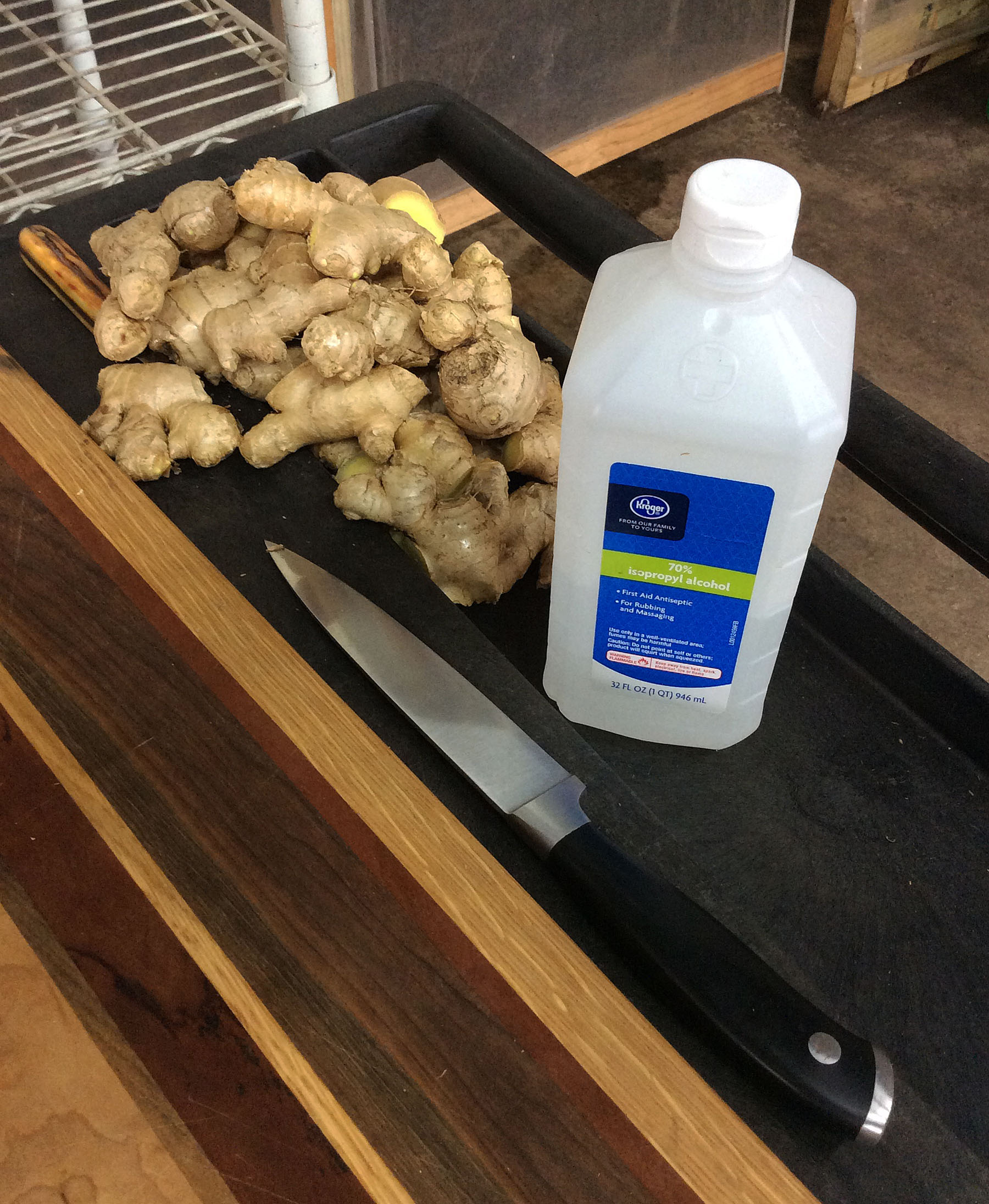
Required tools for preparing your ginger seed
• Use a well-draining, organic soilless mix.
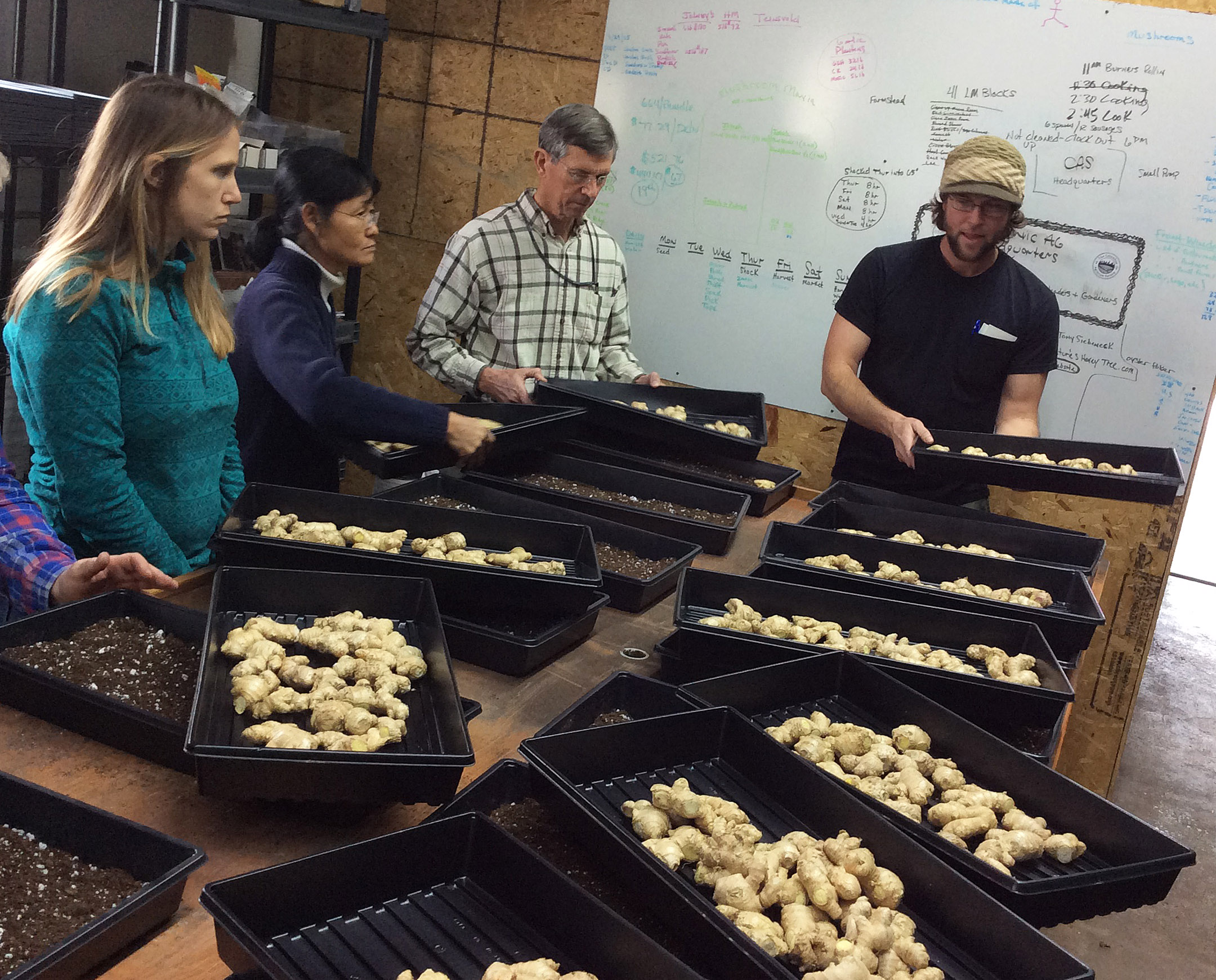
Joseph Swain, in black t-shirt, offering sage advice
• Do not let your ginger seed touch.

Placement of ginger
• Completely cover the ginger rhizomes and water them well.
• Do not let the ginger get too hot (over 80°) or too cold (under 65°)
• Monitor the moisture of the media and let the mix dry out, mostly, before you water again. Ginger rhizomes are prone to rot in overly moist soils.
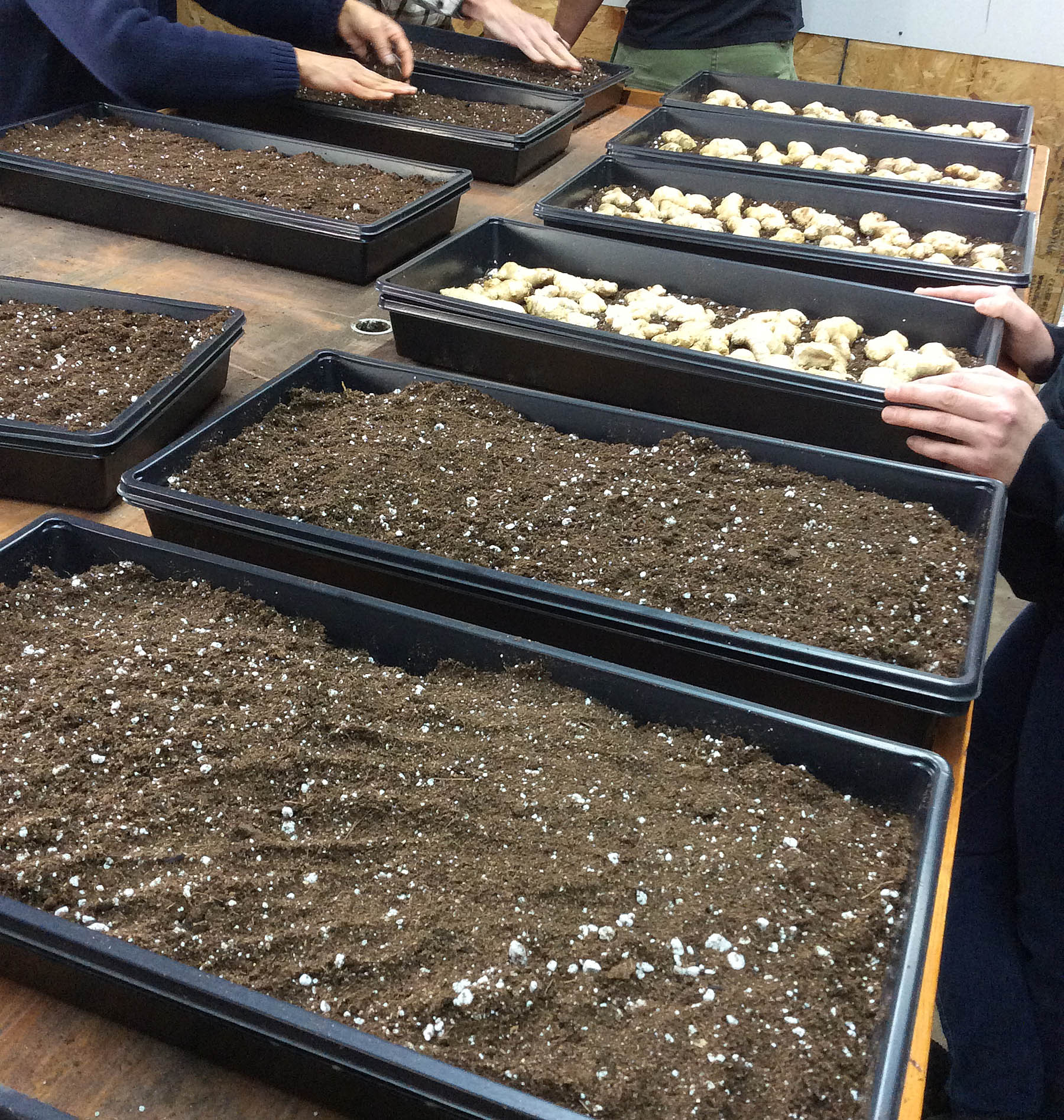
Almost done; just add water and vigilance.
I am hoping that I will be able to show you a bountiful harvest sometime in July. Maybe there will be enough to share…
by GardenLover | Feb 28, 2016 | Gardens to Drive
Naturescapes, edibles and soothing hues round out this season’s trends at Columbus Home & Garden Show which wraps up today at Ohio Fairgrounds.
The National Association of Landscape Professionals (NALP) announced its official list of the top landscape design trends for 2016 and several were evident this week at the Columbus Home & Garden Show.
According to Missy Henriksen, vice president of public affairs, NALP, “the latest trends reflect the desire to bring the indoors out—to create comfortable landscapes that are both functional and beautiful. At the same time, we’re seeing a shift toward sustainable landscapes that reflect a renewed sense of mindfulness for the Earth and its ecosystems.”
- Fully customized outdoor living spaces. As more and more homeowners entertain outdoors and make the most of time spent outside, landscapes have become extensions of interior spaces, complete with furniture and appliances. Beyond basic decks and patios, more landscapes this year will be transformed into full-service kitchens with brick ovens and grills, comfortable living and dining rooms featuring fireplaces and firepits, and romantic canopy bedrooms. Themed spaces, such as yoga gardens or bocce fields, further personalize outdoor retreats to fit homeowners’ interests.
- Lighted and high-tech landscapes. A natural extension of the outdoor living trend is equipping these landscapes with creative and functional lighting and technological enhancements. Dramatic and boldly colored lights, twinkling accent lighting in walkways, backyard Wi-Fi and TV installations are just some of the ways gardens are getting tech-savvy in 2016.
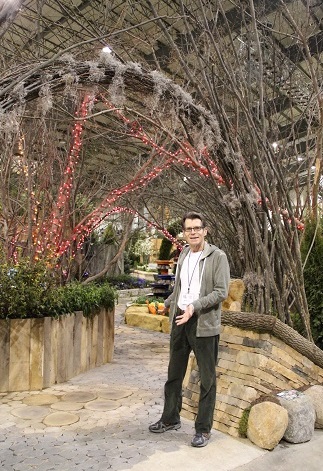
- Eco-friendly and native gardens. “Naturescaping”—selecting and growing native plants to attract birds, insects and wildlife—is one method landscapers will continue to employ in 2016 to appeal to an increased interest in developing environmentally conscious landscapes. Busy homeowners seek simply beautiful landscapes that are easy to maintain, and naturescaping encourages the use of low-maintenance perennial native plants and innately manages water runoff. The installation of solar-powered lighting or energy-efficient LED lights is another way landscapes will go green this year.
- Edible landscapes. The demand for low-maintenance options has made container gardens, which often do not require extensive care, grow in popularity. When combined with a preference for the natural and organic, a new trend emerges: edible landscapes. Fresh herbs, fruits and vegetables add texture and color variety to landscapes, while providing a fresh supply of delicious ingredients. Not limited to individual home gardens, edible landscapes will be planned and planted by landscape developers in neighborhoods and community residences in 2016.
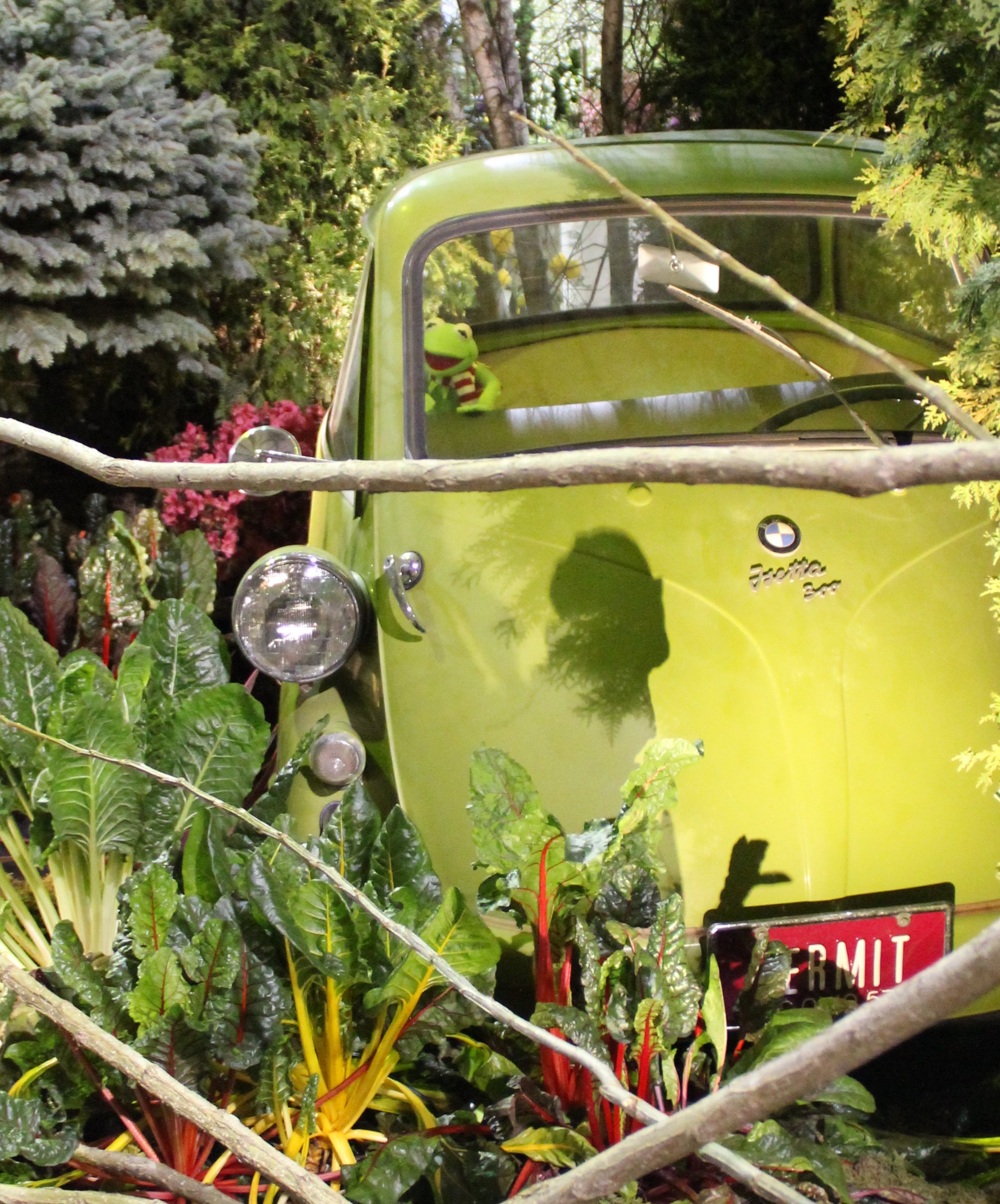
Even Kermit the frog appreciates edibles like these colorful chard.
- Freshwater features. The techniques used to manage stormwater will not be hidden in 2016. Rain barrels, rain gardens and stone retaining walls add stunning dimension to lush landscapes, while serving an important purpose of collecting, cleaning or stopping water. In fact, water and other non-plant features, including sculptures or pottery, are becoming focal points in landscapes.
- Soothing hues. For the first time, Pantone, the authority on color and provider of color systems and technology for color communication, has announced the blending of two colors—Rose Quartz and Serenity—as its Pantone Color of the Year for 2016. Expect these soft, nature-inspired pink and blue hues to bloom in gardens this year as heritage rose bushes, Catherine Woodbury daylilies, Angelique tulips, blue lace delphinium, French hydrangea and others.
by GardenLover | Feb 16, 2016 | Gardens to Drive
Cold frames, row covers extend the growing season
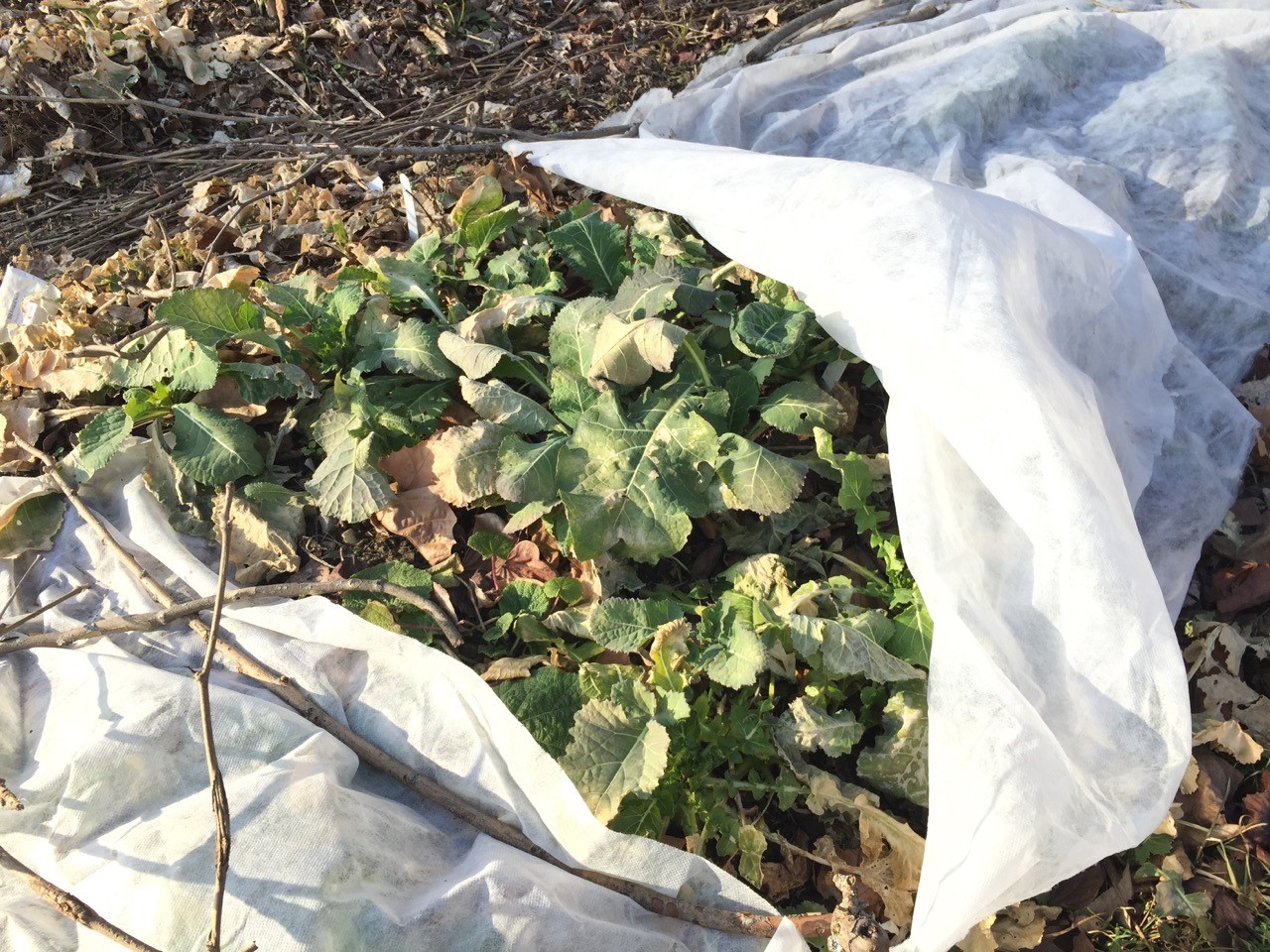
Row covers seem to reduce wind burn, allowing cold-tolerant greens a chance to survive winter. I picked a few leaves from these collards, planted in late summer, in early February.
By Michael Leach
Perhaps a pinch of pixie dust would make cold frame gardening more appealing.
Cold frames, solar-heated grow boxes, are as utilitarian as shovels and trash cans. Mine, constructed of salvaged bricks (for passive solar heating) and a window sash from an old aluminum storm door, is especially homely. Although a commendable example of up-cycling, it’s hardly worthy of Martha Stewart.
Fairy gardens, on the other hand, appeal to the imagination. This is where Barbie does gardening with cute little plants and adorable accessories to match every outfit. Macho versions also exist, from farms and ranches to Jurassic jungles with plastic dinos. No doubt succulent-studded landscapes worthy of Star Wars also exist somewhere in the galaxy.
Despite its lack of visual appeal, the cold frame oozes charm. It’s an excuse to dabble in the dirt long before (or after) the growing season. For cabin fever crazed green thumbs, this is as much a draw as the most elaborately accessorized fairy garden.
The only accessory in my cold frame is a row marker for the kale planted January 30.
Yes, January 30. That’s part of the appeal of cold frame gardening, a chance to plant in a reasonably safe environment “when all aloud the wind doth blow … and birds sit brooding in the snow … .” as Shakespeare observed. Beneath the glass cover, the wind won’t blow the little kale, spinach, collards and other tough greens. Inside their miniature world, the weather is more late-March or early April, which is about planting time outside in this part of the Midwest. And that’s only if soil and weather conditions cooperate.
Besides an early start, I’ve found the cold frame eliminates the tedious business of coddling seedlings for weeks indoors under lights or on windowsills. This is child’s play for many growers but somehow I usually manage to dump trays when watering or being klutzy.
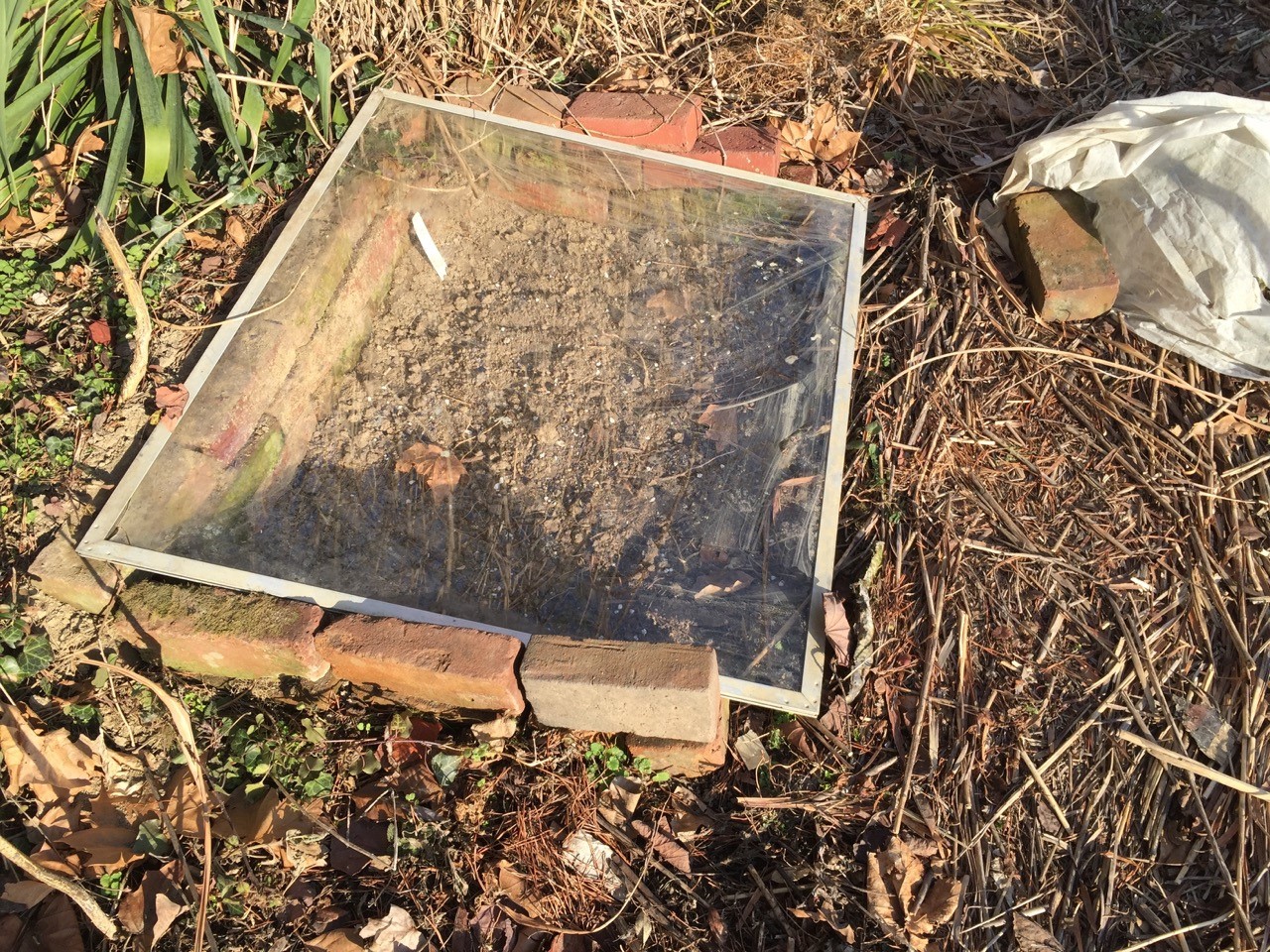
Cold frames can be constructed of many types of materials. Mine is made of salvaged bricks and a window sash.
Cold frames aren’t foolproof. Because a vicious blast of late winter might prove too much, additional sowings are planned about every two weeks or so.
Another threat is neglect. Even cool sunny days can turn a cold frame into a solar oven. Monitoring is a must to keep the lid ajar as needed. Temperature controlled hinges are available for ambitious gardeners. They’re the sort who use cold frames for: wintering plants of questionable hardiness, forcing spring-flowering bulbs, starting summer flower and vegetable seeds, and sowing fall crops that will linger into winter.
Besides cold frames, floating row cover serves as a season extender. The lightweight fabric is made specifically for agricultural purposes. The sort I use is designed to ward off insects not frost. Yet it has been sufficient most years to help spring-planted greens survive all winter and produce a flush of new foliage the following spring. When this happens, the plants eventually burst into sprays of cheery yellow flowers that delight bees.
Googling “cold frames” and “floating row cover,” not to mention checking the gardening sections of public libraries, produce a plethora of ideas for creating and using these warming environments for early — and late — season gardening.
Now that I think about it, maybe a miniature red tractor and some tiny fencing would add a dash of whimsical charm to the kale seedlings when they emerge.
by GardenLover | Dec 15, 2015 | Gardens to Drive
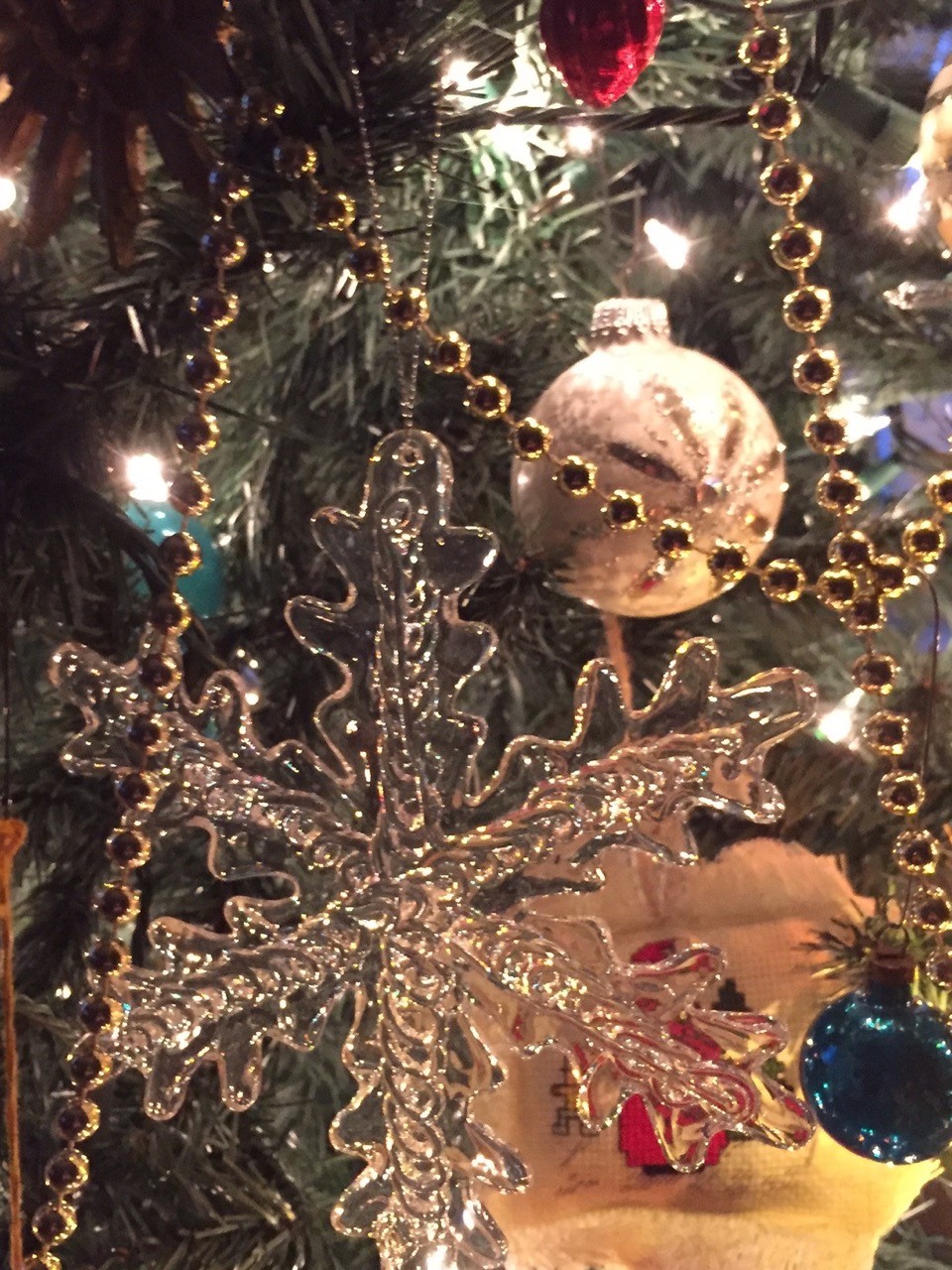
Ladened with family keepsakes, gifts and souvenirs, any tree, real or fake, is star of the holiday show.
Bah humbug! Tis the season’s real meaning that counts
By Michael Leach
A pointless debate arises every year Christmas season — real or fake. Tis one of many irrelevant “traditions” that detract from the true meaning of this special season.
“A Charlie Brown Christmas” helped torpedo sales of silvery aluminum trees when it first aired on television a half century ago and seemed to give wooden trees an unbeatable lead. Even spindly (may we say scraggly?) real trees became adorable. But not at our house.
Ironically, my sister and I, not our parents, championed a faux fir. This was anathema to our parents. During our early childhood years Father bought a live tree. After the holidays, most were planted in a windbreak along the west side of the back yard where a few continue to thrive. Our first live Christmas tree now towers far higher than the family home place.
But wrestling a tree growing from a fat ball of lead-like soil eventually offset the charm of a living memorial to our favorite holiday. Enter cut trees.
After several years, this also came to a halt. Our last tree shopping day is described perfectly in a rather somber carol, “Frosty wind made moan, Earth stood hard as iron, Water like a stone …In the bleak midwinter, long ago.” Three of our perfectionist family of four went from tree to tree at several lots.
Bleak got bleaker. Even when Sister, Father and I finally agreed on a specimen, Mother would nix it. Sitting in the warmth of the car, idling to keep the heater blasting sufficiently to melt iron, she would offer a faint sneer and several shakes of her head.
Finally fatigue prevailed. We toted home a less than perfect tree. It’s flawed state was quickly altered by Father and I. We sawed off the crooked bottom of the trunk. We snipped back a few bushy branches, and drilled holes to insert them into the trunk to give the tree a fuller, more symmetrical effect. (Back then, virtually all trees had a good side, positioned to face into the living room, and a bad side rammed against a wall or window.)
Real tree enthusiasts swoon over the scent of fresh pine or other conifer. Ours smelled of fire retardant. Father took no chances.
Mother had the dreary task of filling the water pan of the metal tree stand every day to ensure Tannenbaum remained as green and life-like as possible. She emerged with long, dangly tinsel icicles and prickly needles decorating her bouffant hairdo. What she uttered during cleanup was anything but tidings of joy.
As Sister and I refused to risk frost-bitten limbs another year, we bought a rather lifelike Pinus plasticus.
My current fake tree is about 25 years old and sheds almost as badly as the brittle spruces that will soon line the curbs. Yet it has a certain nostalgic value no cut-and-toss wooden tree can boast. Plus, it decorates more easily than the real deal. Need that ornament to hang an inch or so to the right? No problem. Bend the branch.
But I digress.
Your choice in trees is strictly personal. We won’t settle the debate by arguing. What I hope we can all agree to is that Christmas, which represents the coming of light, hope, new life, and peace is more needed than usual this year.
by GardenLover | Nov 19, 2015 | Gardens to Drive
Remember